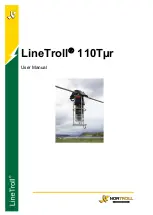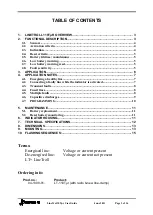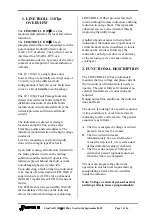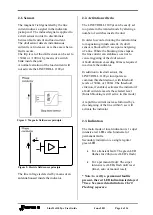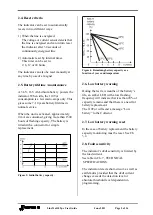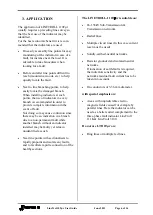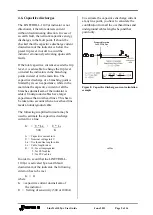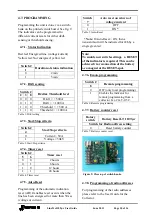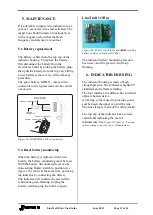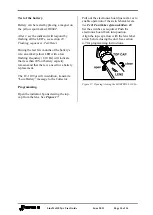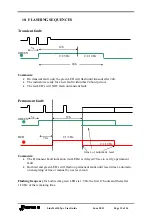
LineTro110Tµr User Guide
June 2011 Page 4 of 16
2.1.
Sensors
The magnetic field generated by the line
current induces a signal in the indicators
pickup coil. The induced signal is applied to
a di/dt sensor in order to discriminate
between fault current and load current.
The di/dt sensor detects instantaneous
current level increases, as is the case when a
faults occurs.
The trip level of the di/dt sensor can be set to
+500A or +1000 A by means of a switch
bank inside the unit.
A normal variation of the load current will
not activate the LINETROLL 110T
r.
Figure 1: Magnetic field sensor principle.
Figure 2: Electric field sensor principle
The line voltage is detected by means of an
antenna housed inside the indicator.
2.2.
Activation criteria
The LINETROLL 110T
r can be easily set
to operate in the wanted mode by altering a
number of switches inside the unit.
In order to avoid activating the indicator due
to magnetising inrush current, it's di/dt
sensor is blocked for 5 sec upon energising
of a line. While the blocking time elapses,
the line current can stabilise so as not to
cause triggering of the di/dt sensor.
A fault duration exceeding 60ms is required
to activate the indicator.
In addition to its di/dt sensor, the
LINETROLL 110T
r incorporates a
common threshold sensor, with threshold
levels of 500A, or 1000A. The threshold
criterion, if enabled, activates the indicator if
a fault current exceeds the selected level.
(Inrush blocking is still active in this mode)
A rapid line current increase followed by a
de-energising of the line within 5 sec will
activate the indicator.
2.3.
Indication
The main mode of local indication is 1 super
intensive red LEDs which indicate for
permanent faults.
Secondary indication is a single regular
green LED.
For a transient fault: The green LED
flashes for 24h (no red LED’s flash).
For a permanent fault: The super
intensive red LEDs flash until reset
(timer, auto or manual reset).
* Note: to verify a permanent fault is
present, the red LED indication is delayed
70 sec. See more detailed info in
Ch 10
Flashing sequence.

